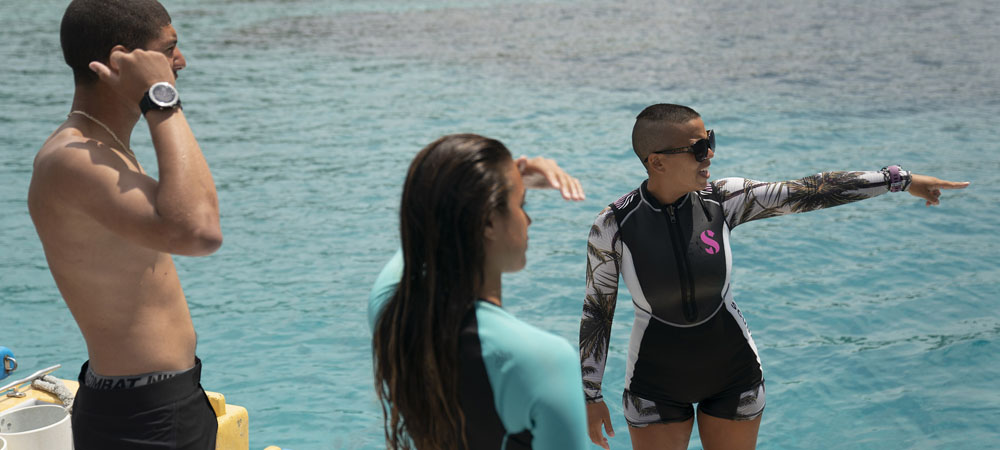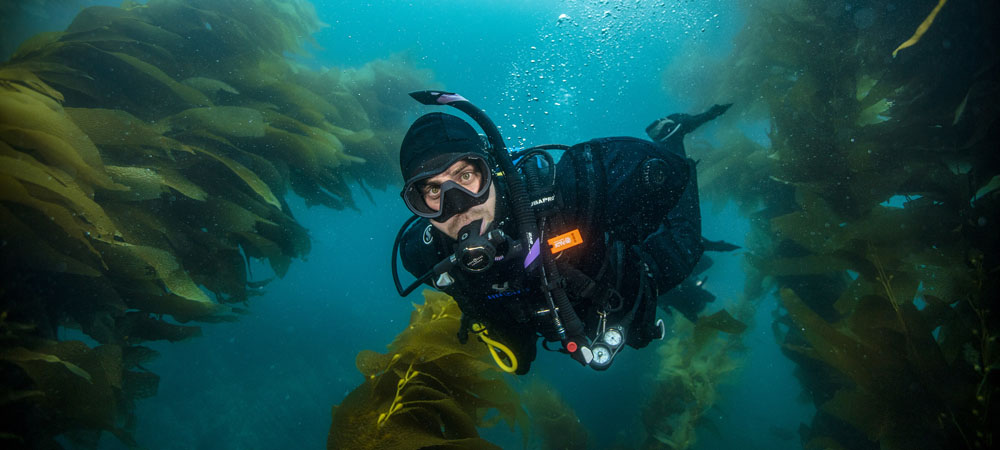Have you ever looked at your website stats and wondered: who are all these people? Your website may get hundreds, maybe even thousands of visitors per month, yet only a small percentage purchase anything.
What if you could convert 35% of your website visitors into paying customers? A good landing page can do just that.
This article will cover landing page best practices, with a special focus on divemaster and IDC courses. That said, many of the tips and ideas can be applied to any PADI® course or program.
What’s the difference between a landing page and a webpage?
First, let’s make sure we’re on the same page (ha ha). Most webpages simply provide information. A good landing page compels anonymous website visitors to share their contact information and eventually become customers. If you’ve ever registered for a webinar, downloaded a whitepaper, or typed in your email to get a special offer, you’ve seen a landing page.
The #1 Landing Page Mistake
Most divemaster and IDC pages suffer from the same problem, they’re nearly identical. Around the world, dive centers large and small all seem to be offering the exact same program!
While it’s good to list the course prerequisites, time commitment, etc. a strong Why Choose Us? message is equally important. Without it, the only way a potential customer can differentiate one dive shop from another – is price.

An effective landing page must include why your pro training is better than any other shop. Avoid using general or generic language such as:
- Experienced and friendly staff
- More than 20 years of experience
Yikes! Is that for a dentist or a divemaster program? Instead, be specific. For example:
Top 3 Reasons to Choose Our Divemaster Program
- Gain Real World Experience – learn how to fill tanks, make basic equipment repairs and work as a deckhand
- Job Placement Assistance – 85% of our graduates find part-time or full-time jobs in the first 60 days
- We Want You to Succeed – All ages and abilities are welcome. Our experienced, caring team will support you every step of the way.
Landing Page Conversion Tips
#1 Make sure important info stands out
Take a closer look at the bulleted list above. It’s doing two things. First, it addresses common concerns people have about the divemaster course. Second, it uses selective bold to draw the reader’s eye as they scan down the page. Make sure your Why Choose Us? information calls attention to itself.
#2 Offer something of value for free
Most people aren’t going to buy a divemaster or instructor course on a whim, so the primary goal of a divemaster or IDC landing page is to convert anonymous website visitors into leads. A big BUY NOW button can scare people away.
Instead, encourage visitors to take a simple and appealing next step, such as typing in their contact info to get something of value. For example:
- Get the Inside Scoop – invite users to fill out a form and gain access to a PDF of helpful resources. You could share tips on how to get a job as a divemaster/instructor, important considerations when choosing a training program and answer FAQs.
Instapage, MailChimp and Unbounce are just a few of the companies that can help you create a landing page that will capture customer info and automatically email them your PDF.
- Save a Seat at our next Become a PADI Pro event. If you don’t have a Become a Pro event scheduled, use the form to collect email addresses of people who want to Get an Invite when the next event is scheduled.
Most email marketing providers can create a new segment (a special mailing list) for people who have expressed interest in pro training.
- If you don’t have the time or resources to create a PDF guide or host a Pro Night, consider what you can do to entice people to share their contact info.
Maybe it’s as simple as Get a Free T-Shirt/Hat/Backpack – if you choose us for your divemaster training. Ask the website visitor to fill out the form to request more info and, if they ultimately register for a class, reward them.
The important thing is to offer something of value in exchange for the website visitor’s contact info. Once you have someone’s email or other contact details, you can start a conversation and guide them down the path to professional training.

#3 Share your rave reviews
Good landing pages also have social proof, such as testimonials. A slider module (also known as an image slider or content slider) is a good way to share testimonial quotes and add visual appeal to your page.
Add the slider in the middle of the page to break up long sections of text or drop it at the very bottom. If your website doesn’t have the option to add a slider, simply copy-paste a few quotes from happy divers, or better yet add a video.
#4 Add a short video
Landing pages with one or more short videos have 66% higher conversions. Studies also show, 60% of people will watch a one-minute video, but almost no one reads every word on a webpage.
Grab your phone, find a quiet place and shoot a simple video of students or staff enthusiastically explaining why your divemaster or IDC program is the best. When you upload the video to YouTube, take advantage of automatic captioning (you can easily edit any errors) because more than 69% of people watch videos with the sound off.
What about SEO? If professional training is a cornerstone of your business and you cater to travelers, search engine optimization (SEO) might be a good investment. But if your target customer is local or you run pro courses infrequently, your time is better spent writing compelling copy, gathering testimonials and making a good video than trying to land on page one of Google search results.

More Landing Page Best Practices
Below are some additional articles about landing page best practices. These companies also offer landing page design templates in addition to other services.
Canva – How to Make a Landing Page
Wix – Landing Page Best Practices: 12 Tips to Drive Conversions
Mailchimp – Landing Page Best Practices


